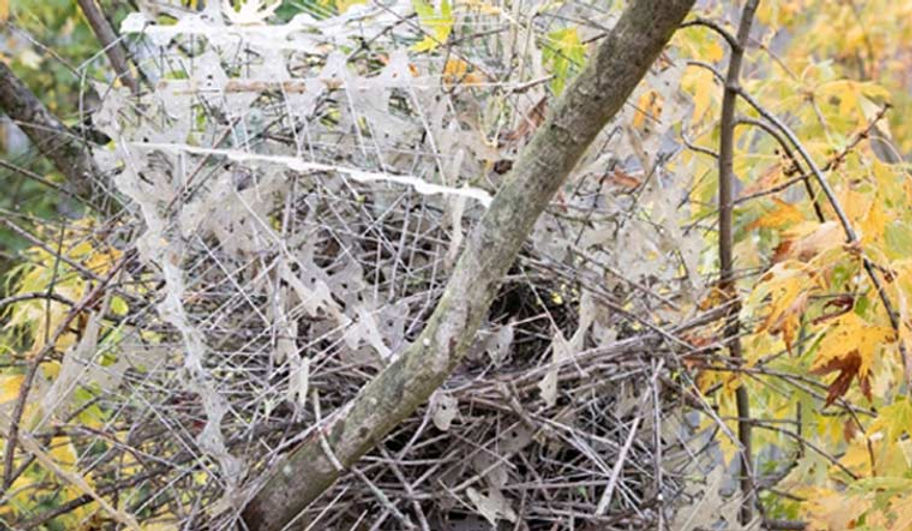By: William Wang
Urban birds ingeniously adapt by repurposing anti-bird spikes, originally meant to deter them, as construction tools for their nests. This remarkable behavior has captured the attention of scientists and bird enthusiasts, shedding light on the incredible resilience of these avian creatures in the face of modern challenges.
Anti-bird spikes are typically made of rigid materials such as metal or plastic, with sharp edges that make it difficult for birds to land or build nests, commonly found on ledges, rooftops, and other structures and have been widely used to discourage birds from nesting in urban areas.
However, in recent discovered that certain bird species, particularly pigeons and sparrows, have not been discouraged by anti-bird spikes. Instead, they have ingeniously turned the deterrent into a resource for their nest-building endeavors.
Researchers observed pigeons and sparrows collecting various materials to build their nests, including twigs, leaves, and discarded human-made items like strings and plastic. Surprisingly, they also found birds prying and plucking anti-bird spikes to incorporate them into their nests. The birds seemed to use the spikes strategically, placing them around the edges of their nests as a form of protection against predators and potential dangers.
This newfound behavior has implications beyond its mere ingenuity. For one, it challenges the notion that anti-bird spikes are an effective and ethical means of bird control. While originally intended to deter nesting, these spikes may inadvertently encourage certain bird species to adapt and persist in urban environments, raising questions about the ethics of using such measures.
Moreover, the discovery highlights the importance of understanding and preserving urban biodiversity. As cities expand and human-made structures dominate the landscape, it becomes increasingly vital to coexist harmoniously with the wildlife that shares our urban spaces. Encouragingly, some cities have already begun exploring alternative ways to mitigate bird-related issues while promoting a balanced coexistence.
In response to these findings, conservation organizations are urging individuals and businesses to consider more bird-friendly practices. Instead of relying on anti-bird spikes, implementing nesting boxes and creating designated green spaces within urban environments can offer birds safer and more suitable places to build their nests.
“Providing birds with appropriate nesting alternatives not only respects their natural behavior but also enhances the biodiversity and ecological health of our cities,” said Sarah Miller, spokesperson for the Avian Conservation Society.
As researchers continue to investigate this intriguing phenomenon, it is evident that birds’ resourcefulness in adapting to their surroundings is a testament to their resilience. It is up to humans to reciprocate this adaptation by seeking eco-friendly solutions that allow us to coexist with the wildlife that shares our urban spaces.
In conclusion, the discovery of birds using anti-bird spikes in their nest-building process sheds light on the adaptability and ingenuity of these creatures in urban environments. This phenomenon challenges the use of anti-bird spikes as an effective deterrent and emphasizes the importance of promoting bird-friendly practices in our cities. As we continue to study and learn from these incredible beings, we can take steps to foster a harmonious coexistence between humans and wildlife in our ever-expanding urban landscapes.











